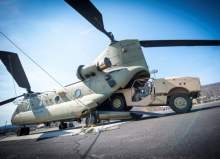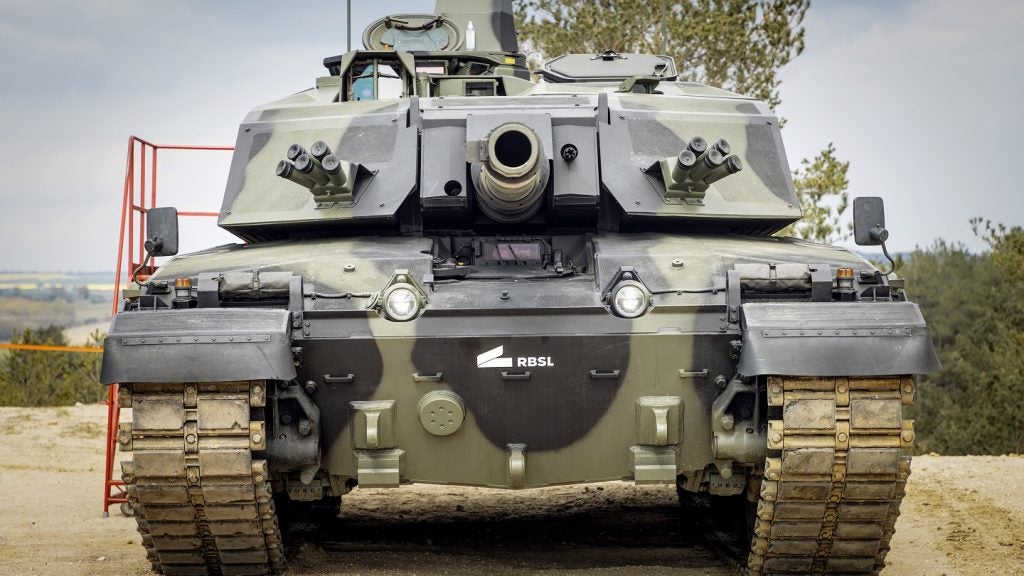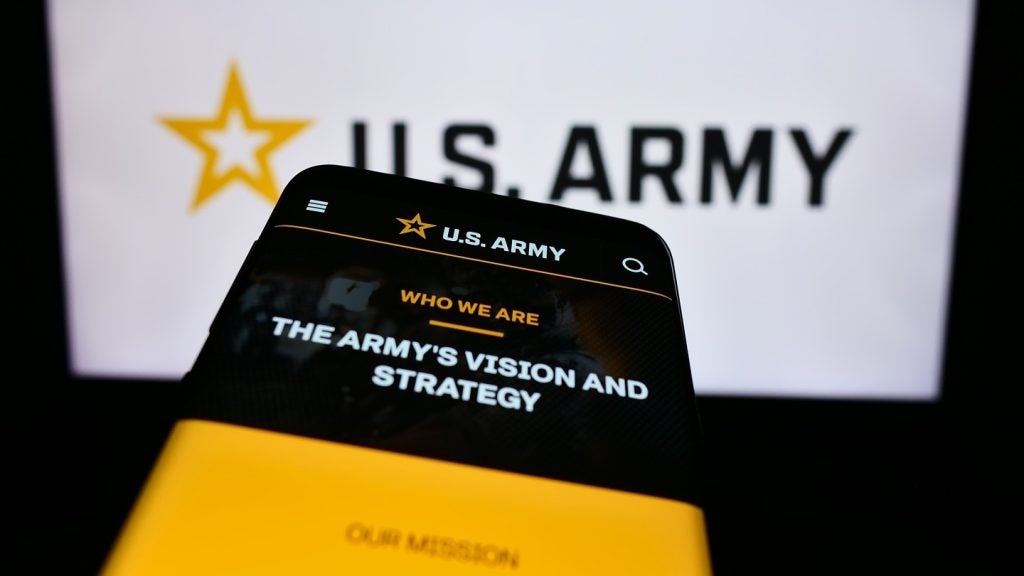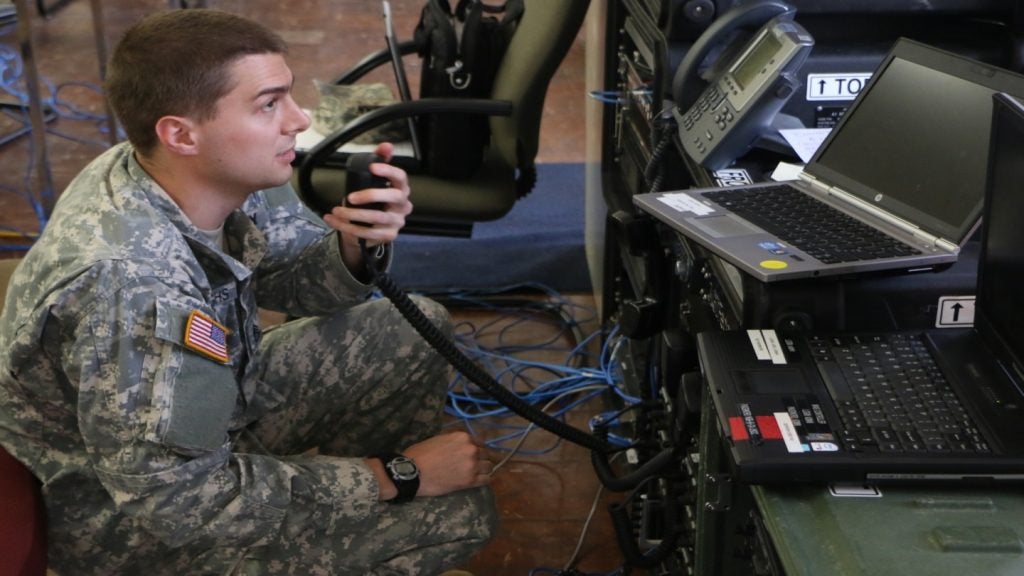

In Afghanistan and Iraq, the main threat to armoured vehicles came from IEDs and shoulder-launched missiles. Arms manufacturers tripped over themselves to offer V-shaped hulls and bolt-on up-armouring packages to make their offerings increasingly impenetrable. This is all very well if you have the luxury of established forward operating bases and logistics chains, but not ideal if you have to deliver a truck full of soldiers behind enemy lines by air in a dense jungle, where a runway would be an impossibility.
Following the draw-down from Afghanistan, the US Army has taken a step back to envisage what the ground vehicle requirements of future conflicts might look like. It has asked manufacturers to submit off-the-shelf candidates for a new Ultra Light Combat Vehicle (ULCV). The main requirement is that ULCVs must be small and light enough to fit inside a CH-47 Chinook transport helicopter or under-slung from a UH-60 Black Hawk, or air-dropped from transport aircraft such as the C-2130 Hercules or C-17 Globemaster. At the same time, it needs the capacity to carry nine fully equipped soldiers and nippy enough to out-run danger.
Not surprisingly, the main candidates derive from vehicles designed to meet a similar requirement for Special Forces, but alongside usual suspects General Dynamics and Boeing, newcomer Polaris is hoping to make its mark.
General Dynamics Flyer-72
General Dynamics Ordnance and Tactical Systems (GD-OTS) developed the Flyer for the US Special Operations Command (SOCOM) GMV 1.1 competition to replace its fleet of Ground Mobility Vehicles, which sought internally transportable vehicles that weigh less than 7,000lbs and are able to carry seven soldiers. GD-OTS engineers first developed the Flyer-60, referring to its width in inches; at 72 inches wide, the Flyer-72 is a direct derivative of the narrower vehicle developed to carry more payload and passengers. The company’s engineers have since made further modifications to the Flyer-72 to better meet ULCV requirements.
“We took the same base vehicle that we proposed for GMV 1.1 and removed all the ‘soft components’ that SOCOM asked for in and on the vehicle,” explains Sean Ridley, programme manager for light tactical vehicles for GD-OTS.
How well do you really know your competitors?
Access the most comprehensive Company Profiles on the market, powered by GlobalData. Save hours of research. Gain competitive edge.

Thank you!
Your download email will arrive shortly
Not ready to buy yet? Download a free sample
We are confident about the unique quality of our Company Profiles. However, we want you to make the most beneficial decision for your business, so we offer a free sample that you can download by submitting the below form
By GlobalDataDubbed ‘the Putin effect’ – several countries are looking to boost the lethality of their armoured vehicles.
“In order to be within the weight and space constraints of the ULCV requirement, we took all of those components out because they’re not required for ULCV. That allows us to get down to a weight of 4,500 lbs and have the space and cubic volume available to put nine guys and all their gear comfortably and safely on the vehicle with no modification to the base vehicle.”
According to GD, one big advantage of Flyer-72 as a ULCV candidate is that, as it is already a programme of record within SOCOM, there is no development time or cost for the army and it can also share the same system support package and logistics.
“It’s highly configurable – we have one base vehicle; one chassis, one suspension, one engine, one driveline. That supports a multitude of vehicle configurations from fully armoured to completely unarmoured and open,” says Ridley.
The uniqueness of that vehicle is that it’s very light, it carries an extreme amount of payload and it keeps all of its mobility parameters whether it’s empty or fully loaded.”
After responding to the original request for information, GD-OTS participated in a product demonstration at Fort Bragg, North Carolina including drive-on, drive-off a CH-47 helicopter and air-drop pallet configuration set-up to demonstrate it meets US Army requirements and capacity.
Until it hears the results, GD-OTS is progressing GMV 1.1 and is ready to deliver nine vehicles in the January/February timeframe for production qualification testing, with low-rate initial production delivery of 72 vehicles due in late 2015. It has also already received significant international interest for both platforms since the contract awards.
Boeing’s Phantom Badger
Hardly a name to strike fear into enemies of America, Boeing’s Phantom Badger was originally designed to be internally transportable in the V-22 in two models for elements of SOCOM (CV-22) and the US Marine Corps (MV-22). It was certified as the heaviest combat support vehicle for internal transport aboard the V-22 by engineers at Naval Air Systems Command (NAVAIR), which tests and certifies payloads for all variants of the V-22. It has been in production since October 2013 and has since been fielded with elements of SOCOM.
At 60 inches it is the same width as the smaller Flyer, weighs 7,850lbs and can go at speeds of up to 80mph. The rear section is customisable to support a range of missions such as personnel transport, reconnaissance, explosive ordnance disposal, mounted weaponry, mortar and ammunition, combat search and rescue and casualty transport.
Phantom Badger has completed more than 5,000 miles of durability testing without any mechanical or safety issues. It has been parachute drop-tested, can be carried on CH-47, C-130, C-17, among others, and is capable of being sling loaded aboard rotary wing aircraft either by single or dual points.
According to Boeing, Phantom Badger meets the requirements of the ULCV programme on several fronts. Using its personnel transport module, the vehicle can carry a total of ten soldiers and their gear, with two vehicles easily fitting inside one CH-47 Chinook. It is quick and highly manoeuvrable, with a 450mile range. It has also been rigorously tested by the government and is already fielded with other US military units.
Beyond ULCV, there is significant interest among other various US forces, especially the Marine Corps who operates the most V-22 Ospreys. There is also considerable international interest in the vehicle, especially among those which operate helicopters and transport aircraft that can easily carry Phantom Badger or have plans to acquire V-22s.
Last year funding for the US Army’s next generation of combat vehicle – the GCV – was slashed and the programme all but cancelled.
To maximise affordability and parts availability, Phantom Badger uses many parts that are very common in the motor pool, such as the hydraulic pump, run flat tires, seat cushions and gauges; and commercial parts, such as the engine, transmission and differentials are easily available. Boeing claims Phantom Badger was designed in such a way that any single part can be repaired or replaced in approximately two hours with common tools and a basic maintenance training course.
Polaris DAGOR
You may not have heard of the Polaris DAGOR, but the US Department of Defense certainly has. It was developed for elements of – you’ve guessed it – SOCOM, and the first vehicles were delivered recently. The company has a somewhat different heritage from its staid military competitors, being originally known for its range of trophy trucks – off-road racing pick-up trucks which usually compete in deserts, flying off dunes. The light weight, speed and responsive design these vehicles require have informed the design of the DAGOR.
The 72.5 inch wide vehicle has a curb weight of less than 4,500lbs and can carry up to 3,250lbs of payload and up to nine personnel, with four in the cab, a gunner and four additional passengers in rear seating. The lightweight turbo diesel /JP8 (jet fuel) engine offers a range of 500 miles.
As with the other vehicles responding to ULCV requirements, the width of DAGOR allows rapid loading into the CH-47 Chinook platform without modification and the weight allows it to be sling loaded under the UH-60 Black Hawk. The vehicle has completed government durability testing and is certified for CH-47 Chinook internal air transport, air drop and UH-60 Black Hawk sling load. It is built from COTS components so replacement parts are easily available anywhere in the world.
“The DAGOR was engineered to meet a very demanding set of light-mobility needs for our customer,” says Jed Leonard, manager of Advanced Mobility Platforms with Polaris Defense.
“It provides the optimal balance of rapid air transportability, payload and advanced mobility. The design offers our customers a modular, light-weight platform to support a variety of expeditionary missions.”
Mysteriously, the company has denied that the all-capitals name is an acronym, leading Tolkien fans to point out “dagor” means battle in Elvish, although other reports suggest it stands for the rather more mundane term ‘deployable advance ground off-road’.
The future
Now it just remains for the manufacturers to sit back and wait for the US Army to announce a green light for the programme and a final selection. In the meantime, if they need more lightweight trucks to try, it would seem US SOCOM has more than a few stashed in its garages.
Follow Berenice Baker on Google+


.gif)





